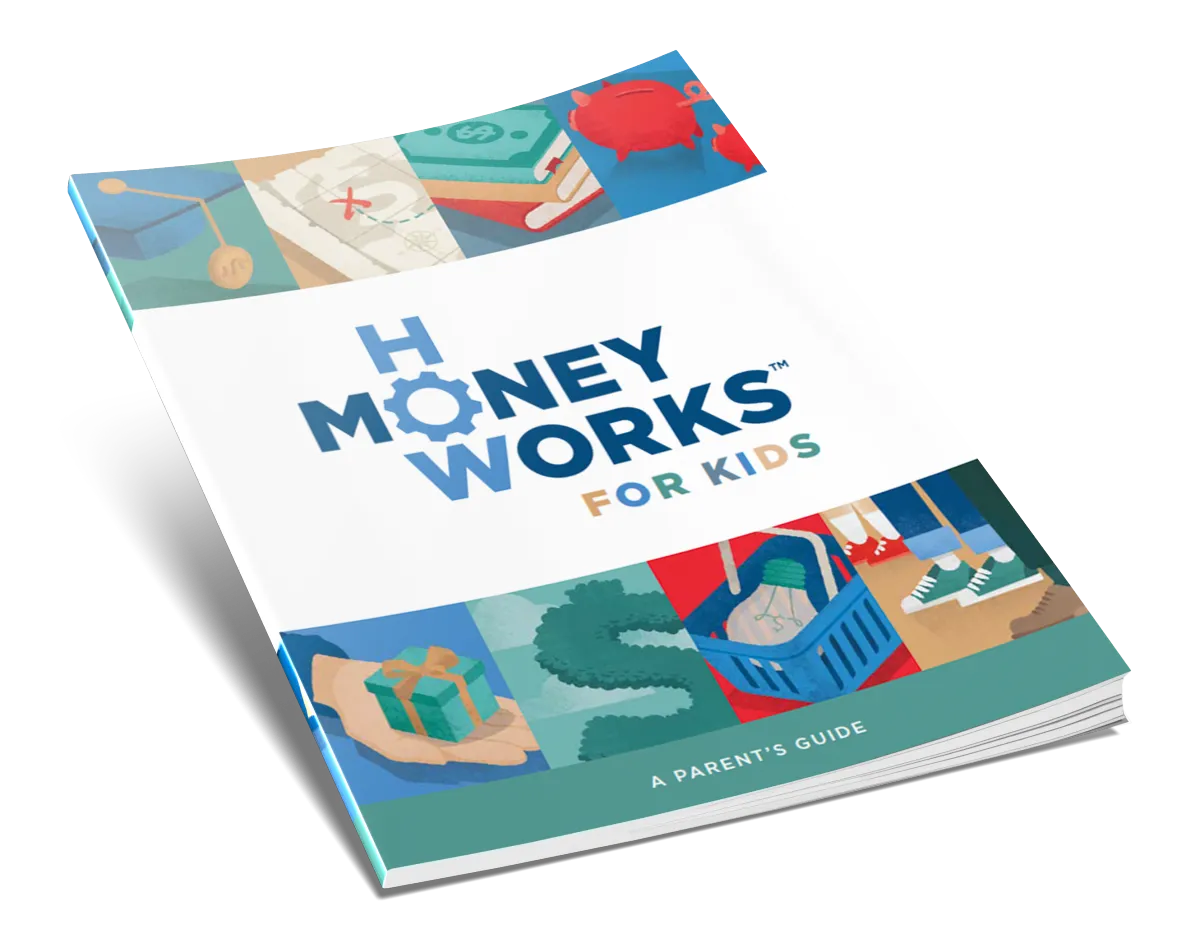



How Money Works… for Kids is designed to help you teach your children simple financial strategies now so they’ll be better equipped to deal with money matters on their own later.
Enter your info below!
About The Guide:
In today’s world, children face constant exposure to advertisements and financial decisions. Our 'How Money Works For Kids' guide equips parents with easy-to-understand strategies to teach children how to save, spend, and invest wisely—skills that will set them up for financial success in adulthood.
Here’s what you’ll find inside our guide:
Check the Money Mirror – Understand how kids pick up financial habits from adults and learn to model positive behaviors.
To Save or Not to Save – Teach your kids the power of saving, compound interest, and the Rule of 72.
Cultivating Smart Shoppers – Help children make wise spending decisions through budgeting and comparison shopping.
Credit and Investing Basics – Introduce the concepts of credit, investments, and long-term planning in an age-appropriate way.
Giving Back – Instill values of generosity and social responsibility in children.
How This Guide Can Help:
This guide will help you turn everyday moments into opportunities to teach kids about money, from managing allowances to understanding the importance of saving.
Why Early Financial Education Matters?
Teaching kids about money early gives them a head start on developing critical life skills. By learning about saving, budgeting, and smart spending habits, children are better prepared to avoid common financial pitfalls and achieve their goals in the future.
Take the first step in raising financially savvy kids. Download the 'How Money Works For Kids' guide today and start teaching your children the money skills they need for a brighter future!
Frequently Asked Questions
What age group is this guide designed for?
The guide is designed for children aged 3–18, with tailored strategies and tips for every developmental stage. From teaching preschoolers the basics of saving to helping teenagers understand credit and investing, this guide grows with your child.
How can I start teaching my child about money?
Start small by introducing simple concepts like the difference between “needs” and “wants” during everyday activities like shopping. Use the strategies in the guide to create engaging conversations and hands-on activities that make learning about money fun and practical.
What topics does the guide cover?
The guide includes:
How to model good money habits as a parent.
Teaching kids to save and understand compound interest.
Budgeting basics and making smart shopping decisions.
The importance of giving back to the community.
An introduction to credit and investing for older kids.
Why is it important to teach kids about money at a young age?
Teaching kids about money early helps them develop good habits that last a lifetime. They learn to manage their finances, avoid common money mistakes, and build a foundation for financial independence as adults.
Are the lessons in this guide practical for everyday use?
Absolutely! The guide is packed with simple, actionable tips that you can incorporate into everyday life. For example, while grocery shopping, you can teach kids about budgeting and comparison shopping, or discuss saving strategies when giving an allowance.
How can I help my teenager learn about credit and investing?
The guide includes beginner-friendly explanations of credit, investing, and the Rule of 72. Encourage your teenager to start with small goals, like saving for college or managing a part-time job income, and gradually introduce them to long-term financial planning.
Can this guide help kids with budgeting?
Yes! The guide explains budgeting basics in a way kids can easily understand. It includes sample budgets and ideas like creating a “money journal” to track income, expenses, and savings, making budgeting a fun and practical activity.
How do I download the guide?
Simply enter your name and email on the "How Money Works For Kids" page, and you'll receive the guide directly in your inbox. It’s completely free!
Can I use this guide if my child is already a teenager?
Of course! It’s never too late to start teaching kids about money. The guide includes sections specifically for older kids, like understanding credit, saving for long-term goals, and exploring investment basics.
How does this guide encourage giving back?
The guide includes a section on teaching kids the value of generosity and community involvement. It offers tips like using a charity jar, participating in fundraisers, or volunteering time to support local causes.
What The Guide Covers

Budget basics

credit and investing

giving back

